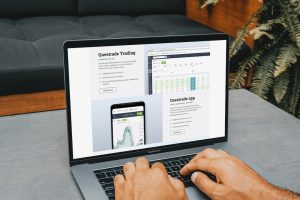Forex banks are financial institutions that play a crucial role in the foreign exchange market. They act as intermediaries between buyers and sellers of currencies, providing liquidity and market depth. However, there is a common belief among traders that forex banks engage in stop hunting, a practice where they intentionally move the market to trigger stop-loss orders and profit from the resulting price movement. In this article, we will explore the concept of stop hunting and examine how many pips forex banks typically move the market to trigger stop-loss orders.
Stop hunting is a controversial practice in the forex market that has been the subject of much debate over the years. It refers to the act of intentionally pushing the price of a currency pair to trigger stop-loss orders placed by traders. Stop-loss orders are used by traders to limit their losses in case the market moves against their position. When the price of a currency pair reaches a predetermined level, the stop-loss order is triggered, and the trade is automatically closed out.
Forex banks are often accused of engaging in stop hunting to profit from the resulting price movement. The theory goes that forex banks have access to large amounts of market data and can use this information to manipulate the market in their favor. By moving the price of a currency pair to trigger stop-loss orders, forex banks can profit from the resulting price movement and increase their trading profits.
So, how many pips do forex banks typically move the market to trigger stop-loss orders? The answer to this question is not straightforward, as there is no definitive answer. The number of pips that forex banks move the market can vary depending on a range of factors, including market conditions, liquidity, and the size of the order book.
In general, forex banks are more likely to engage in stop hunting when the market is illiquid and there are fewer orders in the order book. This is because it is easier for them to move the market in their favor when there are fewer traders in the market. In such cases, forex banks may move the market by as little as a few pips to trigger stop-loss orders.
However, when the market is more liquid and there are more traders in the market, forex banks may need to move the market by a greater number of pips to trigger stop-loss orders. This is because there are more traders placing orders, and the order book is larger. In such cases, forex banks may need to move the market by 10, 20, or even 30 pips to trigger stop-loss orders.
It is worth noting that not all forex banks engage in stop hunting. In fact, many forex banks have strict policies in place to prevent their traders from engaging in such practices. These policies are designed to protect the integrity of the market and ensure that traders are not unfairly exploited.
In conclusion, stop hunting is a controversial practice in the forex market, and there is no definitive answer as to how many pips forex banks typically move the market to trigger stop-loss orders. The number of pips can vary depending on a range of factors, including market conditions, liquidity, and the size of the order book. While some forex banks may engage in stop hunting, many have strict policies in place to prevent such practices. As a trader, it is important to be aware of the risks associated with stop hunting and to take steps to protect your trading positions.





